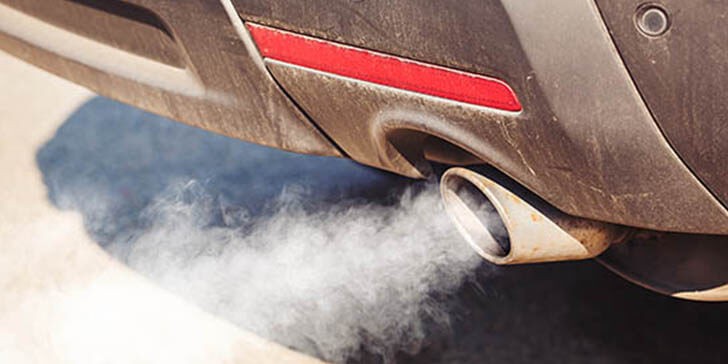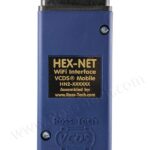Catalytic converters are crucial components in your vehicle’s exhaust system, playing a vital role in reducing harmful emissions. When your car’s computer detects a problem with the catalytic converter’s performance, it often triggers trouble codes P0420 or P0430, indicating “catalyst efficiency below threshold.” But what does this mean, and how do you diagnose it? This guide, brought to you by the auto repair experts at keyfobprog.com, will break down these codes, explaining the relationship between your catalytic converter and oxygen sensors and what steps you can take to understand and address this issue.
What Does “Catalyst Efficiency Below Threshold” Really Mean?
To understand “Catalyst Efficiency Low,” we first need to appreciate the job of a catalytic converter. In simple terms, it’s designed to clean up the exhaust gases produced by your engine before they are released into the atmosphere. It does this through chemical reactions that convert pollutants like hydrocarbons, carbon monoxide, and nitrogen oxides into less harmful substances.
For this process to work effectively, there needs to be a difference in the exhaust gas composition before and after the catalytic converter. This is where your vehicle’s oxygen sensors come into play. Modern vehicles use at least two oxygen sensors for each catalytic converter bank:
- Upstream Oxygen Sensor (Front): Located before the catalytic converter, this sensor monitors the air-fuel mixture coming directly from the engine. It constantly switches between rich and lean as the engine management system strives for the optimal combustion ratio.
- Downstream Oxygen Sensor (Rear): Positioned after the catalytic converter, this sensor’s job is to check the efficiency of the converter. Ideally, after the exhaust gases have passed through a functioning catalytic converter, the downstream sensor should show a much steadier signal compared to the upstream sensor, indicating that pollutants have been effectively reduced.
“Catalyst efficiency below threshold,” therefore, signals that the downstream oxygen sensor is detecting too much fluctuation, mirroring the upstream sensor’s activity too closely. This similarity in signals tells the car’s computer (Engine Control Module or ECM) that the catalytic converter is not efficiently performing its emission-reducing job, and thus triggers the P0420 or P0430 code.
Identifying “Catalyst Efficiency Low” – The Role of Oxygen Sensors
The key to diagnosing a P0420 or P0430 code lies in understanding the signals from your oxygen sensors. When your engine is warmed up and running in closed-loop operation, a healthy catalytic converter will cause the downstream oxygen sensor to produce a relatively stable signal, indicating low oxygen content and effective pollutant conversion.
However, if the catalytic converter is failing or not working correctly, the downstream sensor will start to mimic the switching pattern of the upstream sensor. In essence, it’s detecting that the exhaust gases after the converter are still fluctuating in oxygen content as much as they were before, meaning the converter isn’t doing its job of “smoothing out” the emissions.
 Catalytic Converters and O2 Sensors
Catalytic Converters and O2 Sensors
In older vehicles, this difference in sensor readings might be more visually pronounced on a scan tool. Newer vehicles with air-fuel ratio sensors (wideband oxygen sensors) upstream may have less dramatic switching, but the principle remains the same: a functional catalytic converter results in a stabilized downstream sensor signal. If both sensors are showing similar, rapidly fluctuating signals after the engine and catalytic converter are warmed up, it’s a strong indicator of catalyst inefficiency.
Common Causes Behind P0420 and P0430 Codes
While the codes P0420 and P0430 directly point to “catalyst system efficiency below threshold,” it’s important to remember that a faulty catalytic converter is not always the sole culprit. Several factors can contribute to these codes, and a proper diagnosis is essential before replacing expensive parts. Common causes include:
- Failed Catalytic Converter: This is the most frequent cause. Over time, catalytic converters can become clogged, melted, or poisoned, reducing their ability to function correctly.
- Faulty Oxygen Sensors: While the code points to catalyst inefficiency, inaccurate readings from either the upstream or downstream oxygen sensors can trigger the code even if the converter is working fine. Sensors can degrade, become contaminated, or have electrical issues.
- Exhaust Leaks: Leaks in the exhaust system, especially before the downstream oxygen sensor, can introduce extra oxygen into the exhaust stream. This can skew the downstream sensor readings and falsely indicate catalyst inefficiency.
- Circuit Problems: Issues in the wiring or connectors to the oxygen sensors can disrupt the signal and lead to incorrect readings.
- Engine Control Module (ECM) Issues: In rare cases, a software or hardware problem within the ECM itself could cause misinterpretations of sensor data or incorrect code triggering. Sometimes, a software update from the manufacturer (TSB or Technical Service Bulletin) is needed to adjust the ECM’s sensitivity to catalyst efficiency thresholds.
- Engine Performance Issues: Problems like vacuum leaks, misfires, or incorrect fuel trims can cause the engine to run rich or lean, overloading the catalytic converter and reducing its efficiency.
Diagnosing Catalyst Efficiency Codes: Becoming a Detective
When faced with a P0420 or P0430 code, a technician’s role is to become a detective, systematically investigating the potential causes rather than immediately assuming a failed catalytic converter. Remember, catalytic converters are robust components and rarely fail on their own without an underlying reason.
Here’s a simplified diagnostic approach:
- Verify the Code: Use an OBD-II scanner to confirm the presence of P0420 or P0430 and check for any other related codes.
- Inspect for Exhaust Leaks: Carefully examine the entire exhaust system for any signs of leaks, especially around joints, welds, and sensor bungs.
- Check Oxygen Sensor Function: Use a scan tool to monitor the live data from both upstream and downstream oxygen sensors. Analyze their switching patterns and response times. Compare the upstream and downstream signals after the engine and converter are warmed up.
- Evaluate Engine Performance: Check for any signs of engine misfires, vacuum leaks, or fuel trim abnormalities that could be affecting combustion and placing stress on the catalytic converter.
- Consider Sensor and Circuit Testing: If sensor signals are questionable, perform further tests on the sensors themselves and their wiring circuits to rule out electrical issues.
By following a logical diagnostic process, you can accurately pinpoint the root cause of the “catalyst efficiency low” code and implement the correct repair, whether it’s replacing a faulty sensor, fixing an exhaust leak, addressing an engine performance problem, or, as a last resort, replacing the catalytic converter itself.
Stay tuned for our upcoming video series where we will delve deeper into specific aspects of catalytic converter diagnosis, including thermal damage, poisoning, and more detailed diagnostic tips categorized under air, fuel, and spark.
